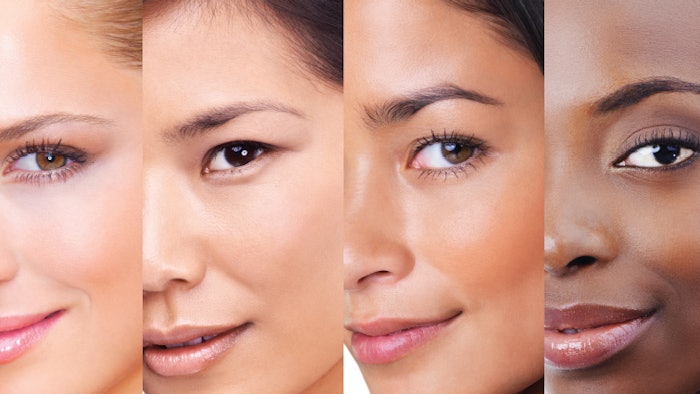
A lot goes into providing effective facial treatments to a client to achieve their skin care goals. Estheticians are not only required to have thorough knowledge and understanding of the physiology and histology of the skin and ingredient chemistry, but also require tools and techniques to gather information to establish the best treatment to achieve optimum results.
Fitzpatrick Phototyping
The Fitzpatrick phototyping scale is a numerical classification model that was developed in 1975 by American Dermatologist, Dr. Thomas B. Fitzpatrick. It is used to classify the skin based on its response to sun exposure, according to the amount of melanin in the skin and whether the skin burns or tans. Are there other skin typing scales? Absolutely! However, the Fitzpatrick scale has been the gold standard tool and most referred to. Information derived from completing the questionnaire is used to predict how the skin is likely to respond to a treatment. Conducting a thorough and investigative consultation and skin analysis are the best methods to acquire information that is required to develop a comprehensive skin care treatment plan.
The Fitzpatrick phototyping scale consists of a series of questions with the answers being translated to numeric scores, which when summed up, yield the total score. The total score is then correlated with six categories used to determine a client’s Fitzpatrick skin type.
The questionnaire is made up of three Identification forms to be completed by the client. It is recommended that they are included in the client intake packet to make the consultation efficient.
The forms includes:
- Genetic Disposition
- Reaction to Sun Exposure
- Tanning Habits
Related: How To Confidently Treat All Skin Tones on the Fitzpatrick Scale
Treating the Fitzpatricks
This exercise can be daunting, as it requires the client to be completely honest about their natural hair and eye color. The results must be accurate to ensure the best treatment. It is important to reassure clients that no judgement is passed in this process because any discrepancies will affect the outcome of a treatment. Discrepancies can be detrimental to the client, as they can cause further damage such as hyperpigmentation or hypopigmentation. This client journey also requires proper pre-conditioning, to be discussed later. To put it a different way, prevention is better than correction.
Once an esthetician has determined a client’s Fitzpatrick skin type, they will know which home care products to recommend to effectively prepare the skin for next-level treatments. Next-level treatments are more active than enzymes and include, but are not limited to, resurfacers, chemical peels and laser treatments, which are most likely to cause significant damage if the skin is not properly pre-conditioned.
Continue reading about the Fitzpatrick Phototyping Scale in our July Digital Magazine...
Ntuthu Dlamini is has been an accredited licensed advanced esthetician, massage and lash technician for over 17 years. Ntuthu brings passion and a wealth of knowledge and technical experience from basic aesthetics education to advanced treatments and modalities. She uses her communication skills in content and curriculum creation, program development and implementation to train skin care professionals. A former Master Aesthetics Educator and I.T.E.C. Examiner, Ntuthu strives to elevate treatment standards to empower the skin care professional on a global scale.











